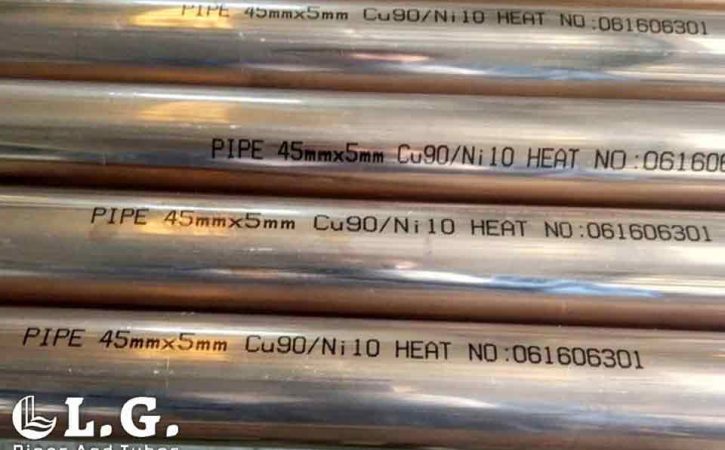
Introduction:
In the intricate web of industrial applications, the choice of materials plays a pivotal role in ensuring efficiency, durability, and corrosion resistance. This is particularly true when it comes to piping systems, where factors like material composition and standards compliance are critical. In this blog, we’ll delve into the realm of Copper Nickel pipes and ASTM A333 Grade 6, shedding light on their significance and the key considerations when selecting suppliers.
Copper Nickel Pipes: Unveiling the Alloy’s Merits
Copper Nickel alloys are a family of materials renowned for their exceptional corrosion resistance, thermal conductivity, and durability. These properties make them ideal for a wide range of applications, from marine engineering to chemical processing and power generation. When it comes to selecting Copper Nickel pipes, choosing the right supplier is paramount.
- Quality Assurance: Reputable Copper Nickel pipe suppliers adhere to stringent quality standards. Look for suppliers who source their materials from trusted manufacturers and conduct thorough quality checks throughout the production process. Certifications such as ASTM B466 and ASTM B467 signify compliance with industry standards.
- Customization Options: Different industries have varying specifications and requirements. A reliable supplier should offer customization options, allowing clients to tailor Copper Nickel pipes to their specific needs in terms of size, thickness, and alloy composition.
- Expertise and Support: Opt for suppliers with a proven track record and a team of experts well-versed in the intricacies of Copper Nickel alloys. A knowledgeable support team can assist in selecting the right material for your application and guide you through the ordering process.
ASTM A333 Grade 6: Unraveling the Strengths
ASTM A333 Grade 6 is a standard specification for seamless and welded steel pipes designed for low-temperature service. Widely used in various industries, including oil and gas, ASTM A333 Grade 6 pipes offer excellent impact toughness at low temperatures.
- Material Composition: ASTM A333 Grade 6 pipes are primarily composed of carbon and low alloy steel. The careful balance of these elements ensures high strength and resilience, especially in sub-zero conditions.
- Impact Testing: One of the key features of ASTM A333 Grade 6 is its requirement for impact testing at low temperatures. This ensures the material’s ability to withstand harsh conditions without compromising its structural integrity.
- Weldability and Formability: ASTM A333 Grade 6 pipes exhibit good weldability and formability, making them suitable for a wide range of fabrication processes. This characteristic is crucial in industries where complex piping systems are common.
Selecting Reliable Suppliers for Copper Nickel Pipes and ASTM A333 Grade 6:
When searching for suppliers for Copper Nickel pipes and ASTM A333 Grade 6, consider the following factors:
- Reputation: Research the supplier’s reputation in the industry. Customer reviews, testimonials, and references can provide valuable insights into their reliability and the quality of their products.
- Certifications: Ensure that the supplier holds relevant certifications, demonstrating compliance with industry standards. For Copper Nickel pipes, certifications such as ASTM B466 and ASTM B467 are essential.
- Customization Capabilities: Look for suppliers who offer customization options to meet the specific requirements of your project.
- Technical Support: A supplier with a knowledgeable and responsive technical support team can provide valuable guidance throughout the selection and ordering process.
Conclusion:
In the realm of industrial materials, the choices we make have a profound impact on the performance and longevity of our systems. When it comes to Copper Nickel pipes and ASTM A333 Grade 6, partnering with reliable suppliers is key. By prioritizing quality, customization options, and technical support, you can ensure that your piping systems are not just functional but optimized for long-term success.
- SHARES








